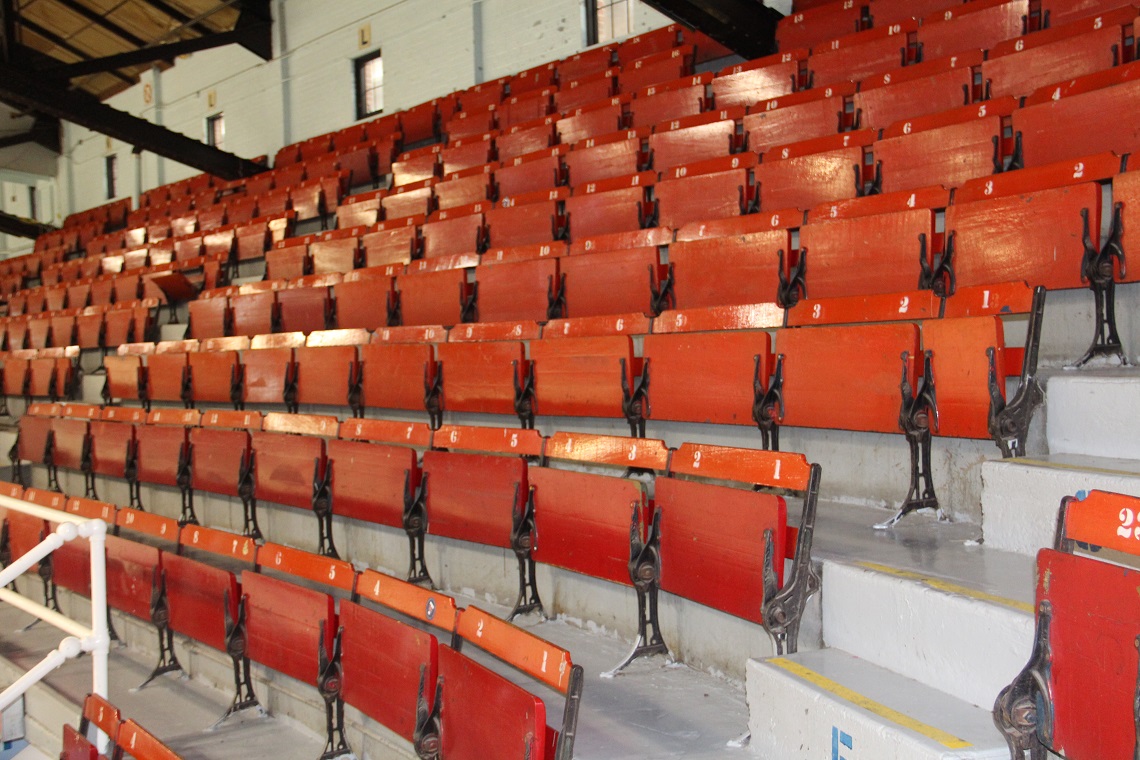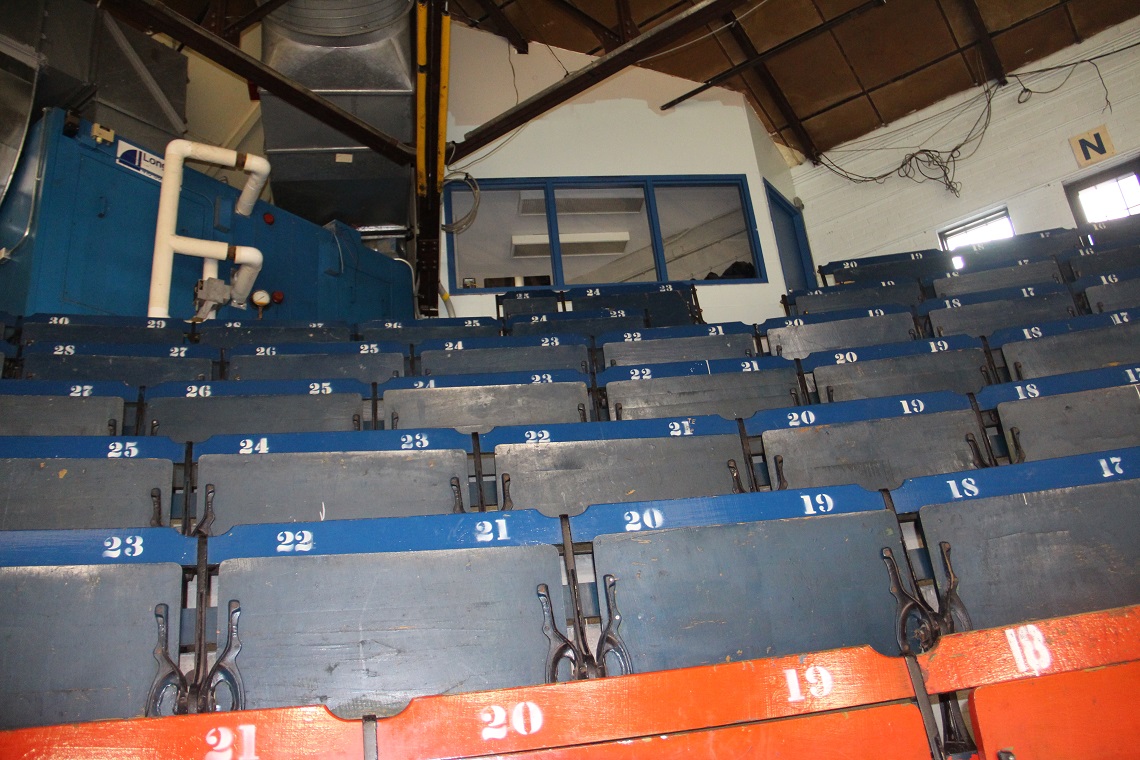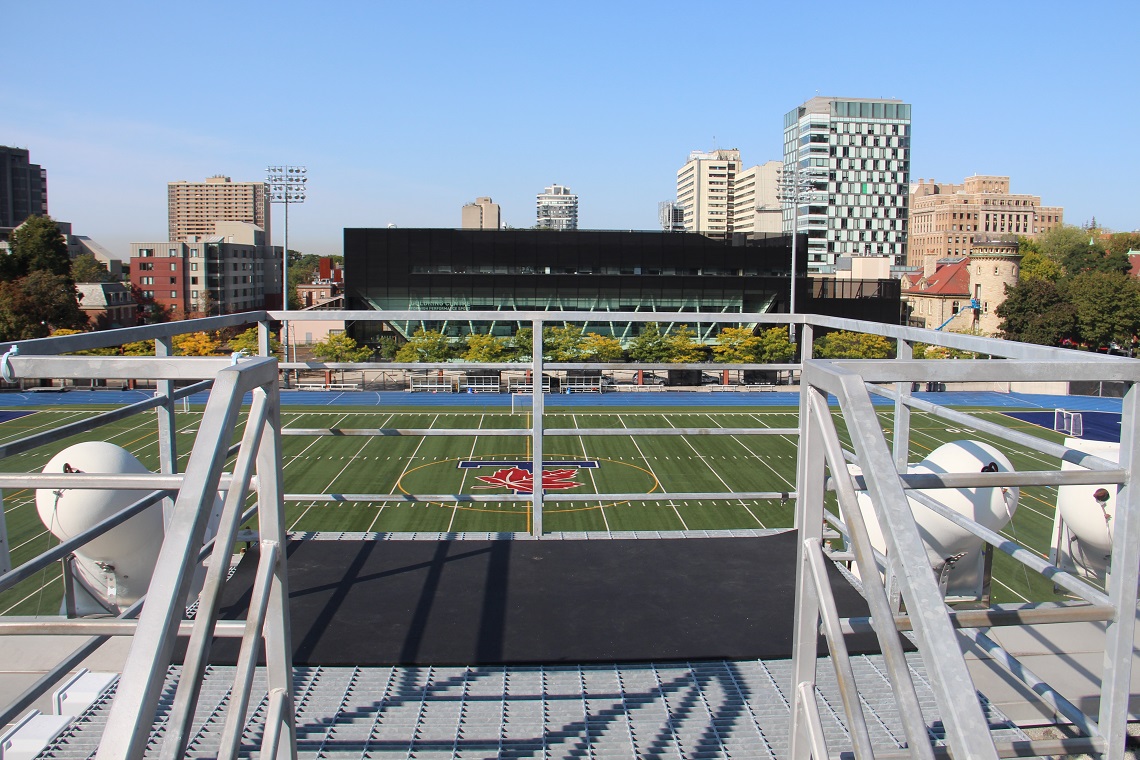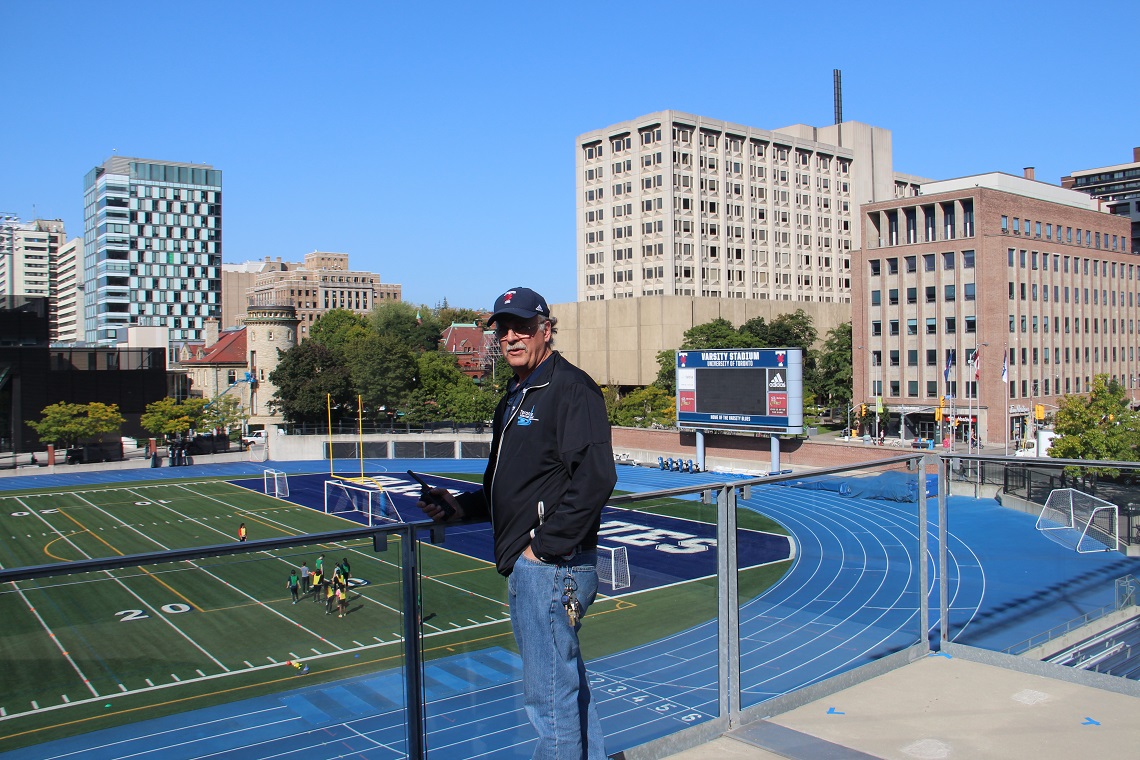It was 1969 and Toronto was hosting the Rock ‘n’ Roll Revival Festival at the University of Toronto’s Varsity stadium. This was going to be the first time John Lennon was performing without the Beatles and the set included other musical icons, such as Bo Diddley, Chuck Berry, Little Richard and the Doors. However, it was Alice Cooper’s act that became the stuff of legend, and the legend says a fan threw a chicken on stage, Cooper threw it back in the audience, who tore it to pieces. And so, Varsity Stadium became the birthplace of shock rock.
Ian Stephen was not present at the eventful concert, but as the assistant facility manager at the Faculty of Kinesiology and Physical Education, he is privy to much of the Varsity Centre’s storied history.
“It really is a building with a fair bit of history and it’s gone through many incarnations,” says Stephen. “Ice hockey teams like the Toronto Toros used to play here in the 1970s and back in the 1980s roller hockey became popular, so there was a professional roller hockey team in the arena, called Toronto Planets. The stadium hosted lots of friendly soccer games between different countries and those would be very popular with fans. There was a professional soccer team in the stadium called the Blizzard. The list just goes on.”
Here’s what else we learned from Stephen.
The field

Back in its concert hosting days, the Varsity Stadium field was covered in natural grass, but as the University's sport and recreation program grew, the decision was made to replace the natural grass with artificial turf. “The field gets used pretty much from 7:00 a.m. to 11:00 p.m., seven days a week,” says Stephen. “It gets used for any type of sport you can think of, even Quidditch. There’s modified cricket, every type of soccer, including bubble soccer, and all our intercollegiate sports, like rugby and football.”
It can be divided into three parts with curtains, so people can play across the field. This helps support U of T’s intramural program, which is the largest in the country. “There could be as many as 120 athletes out in the field at one time,” says Stephen.
The field is also used to host events, from U of T’s Boundless campaign and Toronto Community Housing track and field meets to visits from the Royals. In 2009, the Prince of Wales and Duchess of Cornwall dropped by for a ceremony to review the troops and present new colours to the Royal Regiment of Canada and the Toronto Scottish Regiment.
In the winter, usually from November to April, the field is domed.
The Arena

The seating in the Varsity Arena hasn’t changed since it was built in 1926. “I think they wanted to leave the original character of the building,” says Stephen. “There are very few arenas that are approaching this age left in the country, so it gives it a feel that you just don’t find anywhere else.” The red and blue seats don’t flip themselves up when you stand up. They have to be physically put up in place by the staff after a game or at the end of the night.
The Arena was also used for exams at one point. “The ice would come out and 600 exam tables would be brought in,” says Stephen.
In other metamorphosis, the Arena was an elegant ballroom for promenade concerts with the Toronto Symphony, a three-ring tent the day the circus came to town and the site of Canada's Prime Minister John Diefenbaker's last Toronto rally, during the 1965 federal election campaign.
The architecture
The architecture of the arena was considered unique at the time. The arch style design over the ice was built with the intention of not having any support columns running into the seating, in order to avoid obstructing views of the ice surface. According to Stephen, this was one of the first times that was attempted and since then copied everywhere.
The "organ room"

“It was very common in most arenas at one time to have an organist to get the crowd going, for anthems and for entertainment between periods,” says Stephen. The Varsity Arena didn't actually have a pipe organ, but it did have a keyboard wired into the PA system in a room overlooking the ice, because the person playing the keyboard had to see what was going on. That room is still there today, but it has been converted into a little office for the equipment manager.
The media gondola

The media centre is broken up into several areas. There is a general viewing area that oversees the stadium, a control room area for sound, a score board and 20 second clocks for football. “Spotter booths are used a lot in football games by the offense and defense coaches, who will be up there with their head-sets on, relaying messages to the field about the things they see from that perspective,” says Stephen. They are also used by the announcers when intercollegiate games are live streamed.
That chicken from the beginning of the article
Years later it was revealed the chicken was not the victim of a crazed mob, but rather an accident. Cooper had thrown it up in the air expecting it to land back on stage, but it landed in the audience instead, where it was trampled. As to where it came from, nobody knows, not even Ian Stephen.

